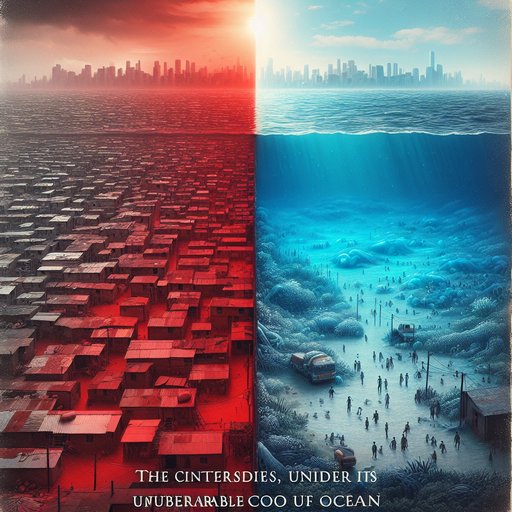
Heat kills democratically, but policy never does. It shields the insulated first and leaves the rest to swelter. That is the lesson of red-lined neighborhoods that map onto asphalt islands, where history bakes into concrete and shade is a privilege parceled by budget lines. As an anthropologist, I read cities as weathered palimpsests of power; the streets tell us who was meant to thrive and who was meant to endure. Today’s ocean politics are writing a similar script at planetary scale. A raft of headlines announcing that an international treaty to protect the high seas will take effect in January and has crossed the ratification threshold sounds like a cool front after a brutal summer [1][2][4][5][6][9]. But whether the blue commons becomes a public shade tree or a private cabana will depend on how we translate a primer’s promises into practice [7].
The old lie is that nature protects everyone equally. In cities, we learned the opposite: tree canopies grow where policy waters them, and the heat maps line up neatly with past decisions about whose bodies were expendable. That same anthropology of power now belongs at sea, where the absence of sidewalks and zip codes does not erase hierarchies of access and risk. The ocean is not a void; it is a mirror, reflecting our arrangements of privilege and neglect.
Set against that mirror, the arrival of the world’s first international treaty to protect marine life in the high seas is a civilizational moment, not just a bureaucratic one [1][2][3]. After the crucial 60th ratification, the agreement is set to take effect, moving from aspiration to obligation [4]. Multiple outlets have confirmed the January start date, a milestone that signals political will to act beyond national borders [1][5][6]. ABC News has helpfully framed what this treaty is and how it is meant to work, underscoring the architecture of a new global compact [7].
The headlines converge on a simple truth: states have agreed to protect international waters—the spaces beyond national jurisdiction that have long been treated as a free-for-all [4][2][3]. The treaty’s entry into force means the world is no longer content to rely on patchwork norms and voluntary restraint [5]. It is the first time we have codified a guardianship of the blue commons at this scale [2][3]. If that sounds like shade arriving to a sun-blasted block, that is because it is: protection is policy, not happenstance.
Yet, like a city that plants trees on one avenue while permitting new heat traps on another, the ocean playbook remains conflicted. Days after the ratification news, India signed a 15-year contract with the International Seabed Authority for deep-sea mining of polymetallic sulphides, formalizing a long horizon for extraction [8]. At the same time, a debate over mapping the oceans has sharpened: charting the deep can be a blessing for conservation or a curse that accelerates exploitation, depending on who holds the maps and to what end [9]. We are drawing the sea’s blueprints faster than we are agreeing on the ethics of their use, and the gap is where harm happens [8][9].
Equity is not a bolt-on to this story; it is the story. Just as tree-equity programs prove that shade is a manufactured good—allocated, denied, and reallocated—marine protection is uneven in practice. Ireland’s struggles to meet European peers on marine protection show how even wealthy democracies can trail on delivery, widening a patchwork of safeguarded and unguarded waters [10]. The risk is that the treaty’s moral horizon outpaces national implementation, entrenching a two-speed ocean where some coastlines and industries find relief first while others are told to wait [4][10].
This is why the ABC primer matters: it invites the public to ask not only what the treaty is, but how it will work at the granular level of permits, patrols, and priorities [7]. The agreement’s legitimacy will be measured in whether it curbs the extractive rush even as new contracts and technologies tempt us back to the old story of domination [8][9]. Mapping can empower protection, but it can also draw a treasure map; governance must decide which it becomes [9]. Entry into force is a beginning, not a victory lap [4].
Cultures can learn. When cities cool the commons—opening libraries as heat shelters, planting trees where history withholds shade—temperatures and tempers drop together. The oceanic analogue is straightforward: pair this treaty’s promise with policies that put protection first, resource national laggards, and scrutinize extraction with a bias toward caution [4][7][10]. If we treat the high seas as our shared canopy and act accordingly, January will not just mark a date on a diplomatic calendar; it will signal that humanity can rewrite its hottest habits into a cooler, more reciprocal future [1][4][7].
Sources
- First treaty to protect marine life in high seas to take effect in January (Al Jazeera English, 2025-09-20T07:28:35Z)
- Nations ratify world's first treaty to protect international waters (Japan Today, 2025-09-19T20:51:32Z)
- Nations ratify the world’s first treaty to protect international waters (Boston Herald, 2025-09-19T19:13:42Z)
- Global agreement to protect the oceans set to take effect after 60th ratification (CBC News, 2025-09-19T21:37:28Z)
- International Treaty Protecting World's Oceans To Take Effect (International Business Times, 2025-09-19T18:51:13Z)
- International treaty protecting world’s oceans to take effect (Digital Journal, 2025-09-19T18:52:20Z)
- A primer on what the high seas treaty is and how it will work (ABC News, 2025-09-19T19:42:26Z)
- India signs 15-year contract with ISA for deep-sea mining for PMS (Mining Technology, 2025-09-22T11:22:33Z)
- Mapping the world's oceans — a blessing or a curse? (DW (English), 2025-09-21T13:24:00Z)
- Net loss? Why Ireland trails Europe on marine protection (RTE, 2025-09-23T13:20:31Z)











































